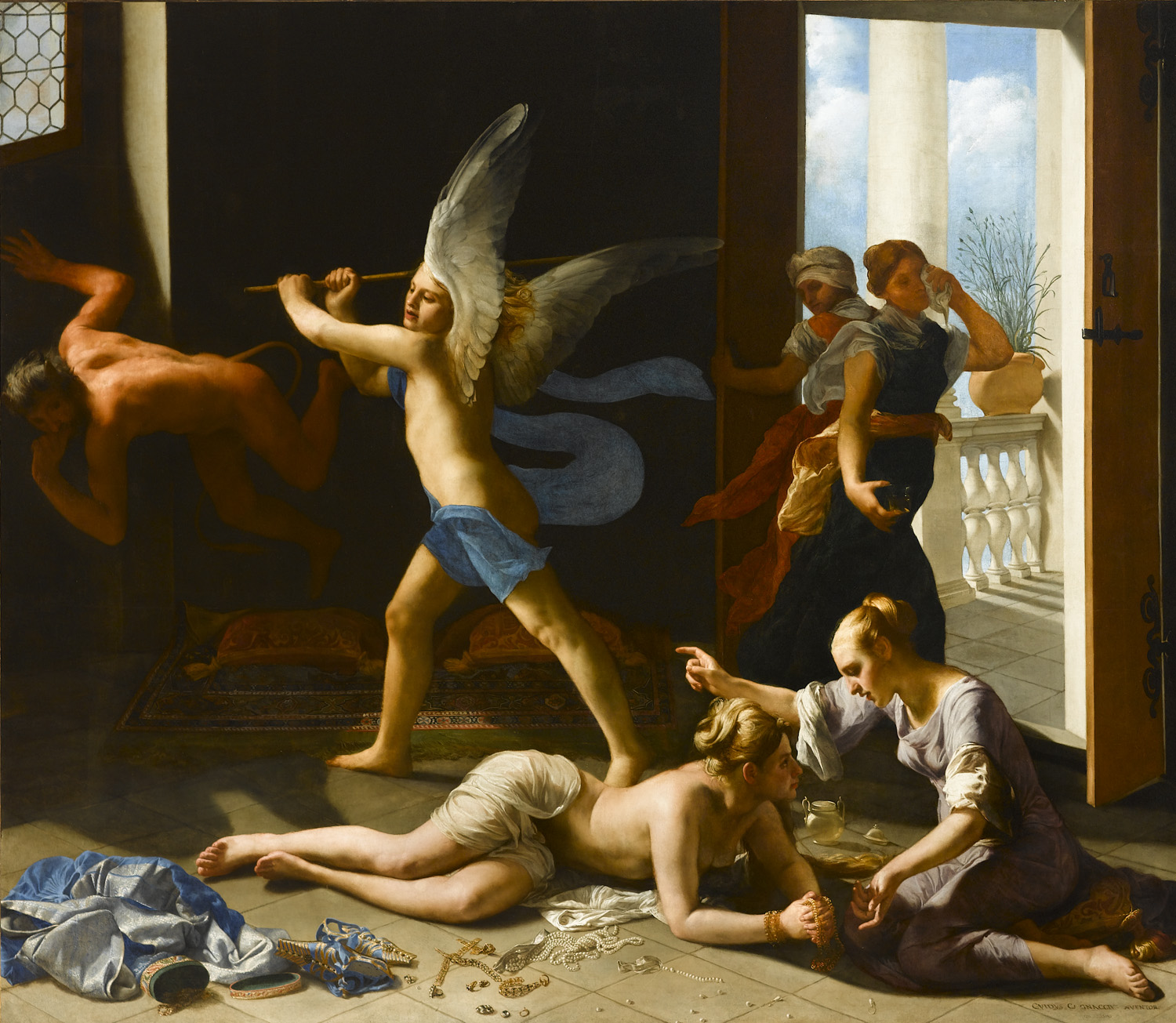The Conversion of Mary Magdalene
c. 1661–62
Guido Cagnacci (Italian, 1601–1663)
Oil on canvas
Norton Simon Art Foundation
In the seventeenth century, Guido Cagnacci was celebrated for his deeply sensual paintings of female saints and heroines. The Conversion of Mary Magdalene, regarded as Cagnacci’s masterpiece, presents a unique treatment of this well-known subject. Full of earthy drama, it depicts Mary Magdalene rejecting her life of sin and excess in favor of following Christ. Her sister, Martha, reinforces her fateful decision. Behind them an angel (Virtue) chases out a devil (Vice). The handmaids at the door reiterate these contrasts: the crying woman represents Contrition; the other, gesturing in annoyance, represents Vanity. A beautiful confusion of cast off clothes and jewels suggests her desertion of this vice. Cagnacci’s brilliant tableau combines lofty allegory with sensuous representation to create an inventive and effective visual metaphor. The artist’s pride and satisfaction with the results are evident, as he signed his name in Roman capital letters at the bottom right corner, followed by the word “inventor.”
Loan Exchange with the Frick Collection and National Gallery, London: Cagnacci’s Repentant Magdalene
For over six months in 2016–17, Guido Cagnacci’s Baroque masterpiece traveled to the Frick Collection, New York, and the National Gallery, London, the first time the painting had been shown outside of California since the Museum’s acquisition of the work in 1982. In addition to sharing the spectacular Repentant Magdalene with a larger audience, the loan generated scholarship on the painting: The Frick Collection’s The Art of Guido Cagnacci (2016) was the first study of the artist’s eccentric life and career in 30 years—greatly contributing to our understanding of Cagnacci’s pictorial achievements.
